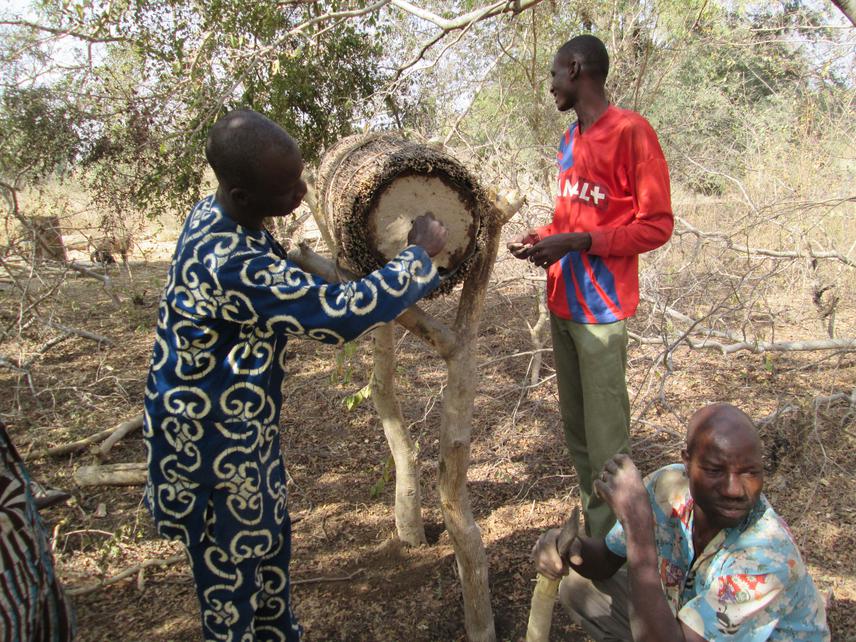Laurent Gbenato HOUESSOU
This project aims to assess the effectiveness of chilli pepper and beehive fence as deterrent methods from croplands on elephant populations in Benin and to raise local populations’ awareness for elephant conservation through environmental education.

Beehive installation in the villages of Bonte. © Laurent Houessou, January 2015.
The African elephant is an endangered and strictly protected species. Despite this status, the species’ conservation remains a great challenge in “W” Biosphere Reserve in Benin due to the frequent recorded conflicts between humans and elephants around the reserve. Elephant raids in the croplands surrounding the reserve lead to crop destruction and many farmers whose field are destroyed by elephants suffer from food shortage until the next growing season. They are disappointed and develop high adversity against elephants’ conservation.
Locally, to cope with this situation, farmers have already developed endogenous methods to repel the elephants from their farms. Preliminary survey that we conducted in villages around the reserve showed that farmers use methods such as noise making with drums and other material, burning of old tyres, traditional gun shooting into the air, etc. Unfortunately, these methods have shown their limits and elephant attacks still persist. Promising low cost strategies developed in some eastern/southern Africa countries to mitigate elephant attacks in cropland are based on chilli pepper (olfactory repellent) and beehive fence (bee buzzing repellent). Therefore, this project aims at alleviating the human-elephant conflict by assessing the effectiveness of chilli pepper and beehive fences as deterrent methods for elephants from croplands around the reserve. It also aims to improve local populations’ awareness for elephant conservation through environmental education and to strengthen reserve manager’s capacities.
To achieve this goal, trials will be implemented in six villages where elephant attacks frequently occur. Two villages will host chilli pepper trial, two will host the beehive fence and the two others will be used as control. Chilli pepper will be cultivated inside field and fence strung with beehives will be installed along cropland. Farmers in villages where elephant attacks frequently occur will be sensitized on elephant conservation.
Through environmental education toward local population and reserve managers capacity building on chilli pepper and bees buzzing techniques, we aim to both raise awareness of local population for elephant conservation and to provide managers with low-cost tools to efficiently contribute to the mitigation of human-elephant conflict. To better follow the project activities, local elephant-human conflict mitigation groups involving diverse stakeholders will be established. These groups will work with reserve managers to promote even after project lifetime, the project outputs for pacific cohabitation between human and elephant in the other villages where crops raiding occur.